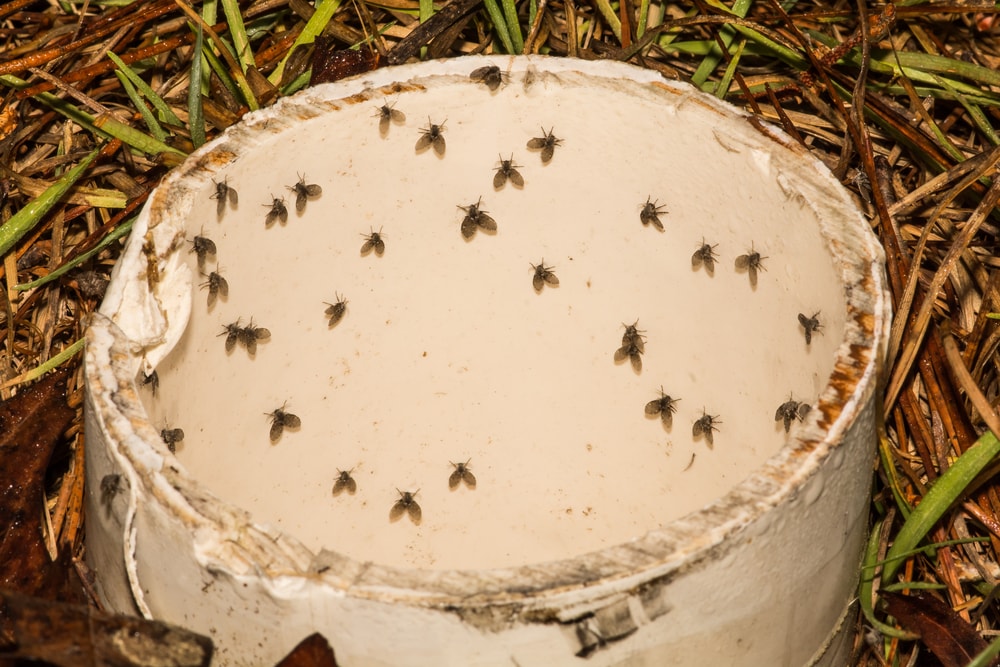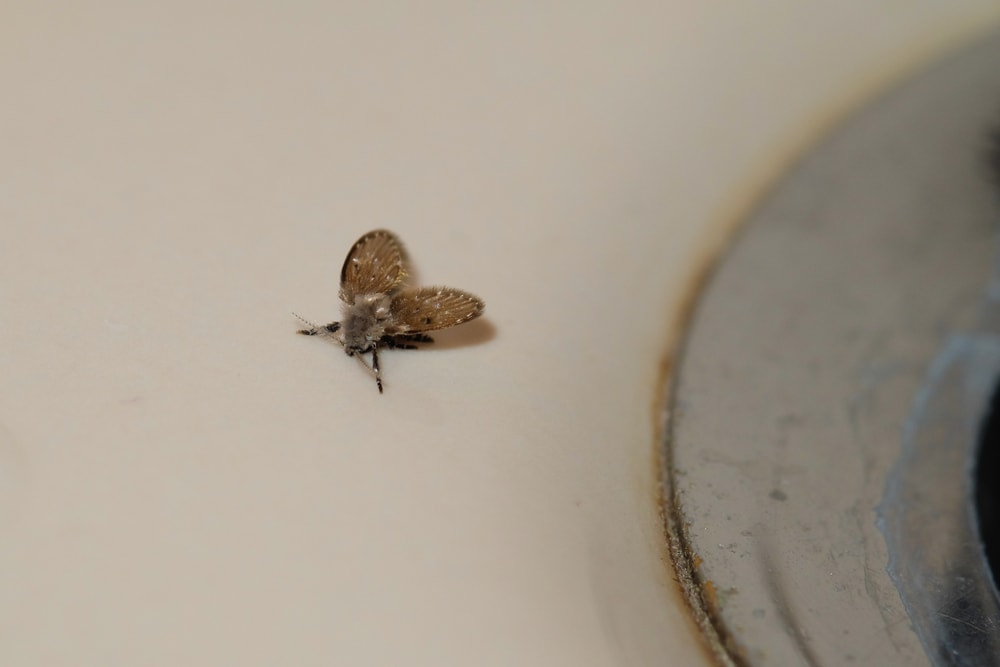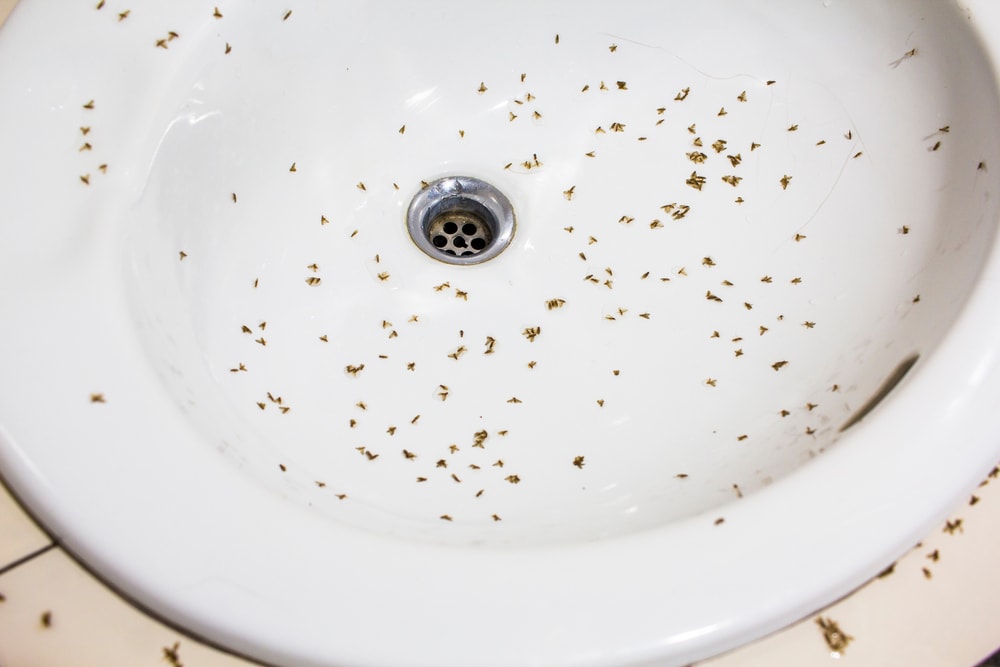Will Drano Kill Drain Flies? Risks & Effective Alternatives
-
Greg Iacono
- Last updated:

The typical home drain, whether in the kitchen, bathroom, washroom, or other location, is a magnet for bacteria, germs, and other foul things. One of the unwanted visitors is drain flies, which are small, moth-like insects attracted to stagnant water and sewage.
Many homeowners, when faced with a deluge of drain flies, wonder if using the well-known drain cleaner Drano will kill them. The answer is yes, Drano will kill drain flies, but it’s not a good first choice to get rid of them. Read on to discover why and what you can do to stop a drain fly infestation permanently.
Health Warning
Drano is a caustic household drain cleaner that can cause severe injuries and death if not used and handled correctly. Before using the chemical, follow all the manufacturer’s instructions. Drano should be applied using eye, face, and hand protection, and it should be kept away from children.

What, Exactly, Are Drain Flies?
Drain flies (Psychodidae) are a type of insect with very short, hairy bodies and oversize wings, which is why they’re also known as moth flies. These tiny flies feed on organic material that builds up inside drains. Because of the abundant food source available, drain flies also breed in drains, which is why you’ll find them flying out of your drain if you have an infestation.
Drain flies aren’t harmful to humans since they don’t sting or bite and aren’t connected with any diseases. However, when they fly around, drain flies can spread germs and bacteria to other areas of your home, including food. Also, when drain flies die, their decaying bodies can trigger allergic reactions in some people. In short, getting rid of drain flies quickly is recommended.
How Does Drano Kill Drain Flies?
Drano is a powerful drain cleaner that uses lye to burn through organic material like hair, oil, and fat. That makes it a caustic (i.e., corrosive) chemical that can burn skin and cause eye, ear, and throat irritation. Drano will kill drain flies if it gets on them and also kill their larva so that they don’t hatch and make more drain flies.
Drano will kill practically any insect that comes in contact with it. To kill drain flies, use Drano as directed by the manufacturer. Typically, this involves pouring in the Drano, letting it sit for a short time, and then washing it away with warm water.
Is Drano a Good Choice to Kill Drain Flies?
Drano, as we’ve seen, kills drain flies. However, Drano isn’t the best choice to kill drain flies for several reasons. The first is that the product is caustic and caustic products are inherently dangerous. The second is that Drano doesn’t remove all the organic material and sewage from drains.
That’s a big problem because if there’s still sewage (aka drain fly food) left for the drain flies, they will often come back, and the infestation will start again. In short, seeking alternatives other than Drano to get rid of drain flies is highly recommended.

What Are the Alternatives to Drano for Eliminating Drain Flies?
Several alternatives are safer than Drano to eliminate drain flies. They include the following methods.
Use a Pipe Brush to Clean the Pipes
If your pipes aren’t completely clogged, a pipe brush might do the trick. You can get a pipe brush at any big-box home improvement store and safely brush away the debris clinging to pipes that drain flies like to eat. Brushing the pipes will also remove drain fly larvae, and when you’re done brushing, you can rinse everything away with hot water.
Use a Bio Gel Pipe Cleaner
Bio gel pipe cleaning products are made with active bacteria that, like drain flies, eat organic matter. The gel is biodegradable, non-caustic, and safe for pipes. The downside is that they take a while to work, so you must be patient. Bio gels aren’t an instant drain fly fix but are safer than Drano.
Check the Toilet Seal
Occasionally the seal between your toilet and floor might need to be replaced. If not, drain flies can come up and into your home from the sewer pipes. The solution is to remove and replace the wax seal (and maybe the gasket if it’s cracked). This will block drain flies from entering.
Use Gentrol Insect Growth Regulator
Gentrol IGR is a product that stops several types of insects from reproducing, including drain flies. After brushing the pipes or using Drano, you can use Gentrol IGR to prevent drain flies from coming back.
Use Boiling Water
Pouring a pot full of boiling water down your drain is an effective and natural way to get rid of drain flies. It’s recommended that you use this method twice a week for 2 to 3 weeks to eliminate drain flies and their larva. The proper handling of boiling water is also advised. Our recommendation; use a tea kettle.
Use a Mixture of Baking Soda, Salt, and Vinegar
Another natural method to eliminate drain flies is to mix ½ cup of baking soda with ½ cup of salt and 1 cup of white vinegar. Pour the mixture into the drain and let it sit overnight. The next day, wash it away with boiling water.
Final Thoughts
If you have a drain fly problem and want to use Drano, you can kill the flies. However, Drano isn’t a great choice for several reasons, including that it’s dangerously caustic and doesn’t remove all the organic matter that attracts drain flies in the first place.
The good news is that you can use several safer alternatives to eliminate your drain fly problem with less risk of injury to you and your family. Whichever method you choose, use caution, read and follow the manufacturer’s instructions, and use proper protective clothing. Drain flies might be irritating, but the last thing you want is for you or someone you love to be injured trying to get rid of them.
Featured Image Credit: Jay Ondreicka, Shutterstock
Contents
